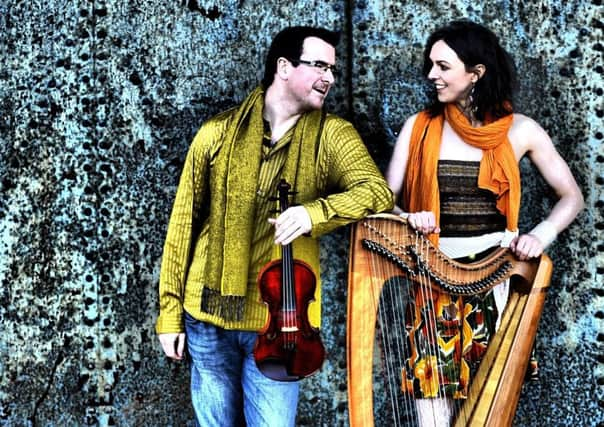Music: The East Neuk Festival explores its maritime links


The East Neuk of Fife’s historical maritime links with the wider world are well enough known: Crail’s Marketgate once seethed with merchants from the Low Countries and beyond and was the largest marketplace in medieval Europe; there’s the well-worn tale of a Spanish Armada vessel limping into Anstruther harbour in 1588; and that seafaring son of Lower Largo, Alexander Selkirk, was of course the inspiration for Robinson Crusoe.
Rather less well known, however, is the story of the Crail wabster, Thomas Kingo, who in the 1580s migrated to Denmark to become a tapestry weaver for King Christian IV, and whose grandson, also Thomas, became a Danish bishop, poet and renowned hymn-writer whose legacy is still sung in Danish kirks today.
Advertisement
Hide AdAdvertisement
Hide AdThis wandering dynasty from Crail will be celebrated in Anstruther Town Hall next Sunday, however, when the East Neuk Festival, which habitually transcends musical genre and period, presents “In the Footsteps of Thomas Kingo”, a concert featuring the venturesome fiddle and harp duo of Chris Stout and Catriona McKay and the similarly eclectic ensemble Mr McFall’s Chamber, in a piece by the Norwegian composer Henning Sommerro. Further steering the concert’s northerly course will be two widely respected Norwegian musicians, Hardanger fiddle player Nils Økland and bassist Mats Eilertsen.
“It’s a lovely story to jump on to,” says Stout of the Kingo piece, “and one that seems to have inspired Henning.” As a Shetland fiddler (Fair Isle, to be precise), Stout is well acquainted with his culture’s Nordic connections and both he and harpist McKay frequently collaborate with Scandinavian counterparts, McKay performing regularly with nyckelharpa player Olov Johansson, of the renowned Swedish band Väsen, and Stout similarly bowing alongside fiddler Susanne Lundeng from the Norwegian Arctic. They’ve also played with Økland, who makes his East Neuk debut with the esteemed jazz bassist Eilertsen.
Stout and McKay also have form when it comes to mixing it with contemporary classical forces. Three years ago they premiered and recorded Seavaigers, a piece written for them and the Scottish Ensemble by Sally Beamish, while other collaborators have included the Russian Philharmonic Orchestra, Quatuor Ébène and the Kronos Quartet.
And it is for a notable folk-classical collaboration which Sommerro is probably best known in Scotland. It’s more than 20 years since Follow the Moonstone, his beautiful settings of Scottish, Shetland and Scandinavian fiddle tunes, were recorded by Aly Bain and the Scottish Ensemble. For Stout, then a violin student at the former RSAMD (now Royal Conservatoire of Scotland), that music helped resolve dilemmas he was experiencing over reconciling classical training with his roots in traditional Shetland fiddling.
“For me, Follow the Moonstone was so instrumental in helping pave our way in understanding the relationship between folk and classical styles. It was important to work it all out in a way that you could celebrate these wonderful different traditions without having to leave one or the other. It settled me in many ways when, as a young student, I really needed to hear people doing what we were trying to believe in.
“Aly and Henning were so important in that development,” says Stout, now 40, “so to be able to have Henning write music for us 20 years on is a lovely thing.”
Sommerro’s composition is titled Chrysillis, after a pastoral love poem written in 1669 by Kingo, whose hymns are still sung today and whose hymns and poetry were regarded as momentous during a period when Danish culture was at a low ebb.
Advertisement
Hide AdAdvertisement
Hide AdStout describes the new piece as “very beautiful, very melodic and, without being too simplistic, accessible. As folk musicians Catriona and I are heavily dependent on great melodies and Henning understands that; some of the music is quite hymnal.
“In one part he quotes from [the Scots fiddle tune] The East Neuk of Fife, so there’s no denying where the heart of the music lies.”
The East Neuk Festival runs from 28 June until 2 July, www.eastneukfestival.com